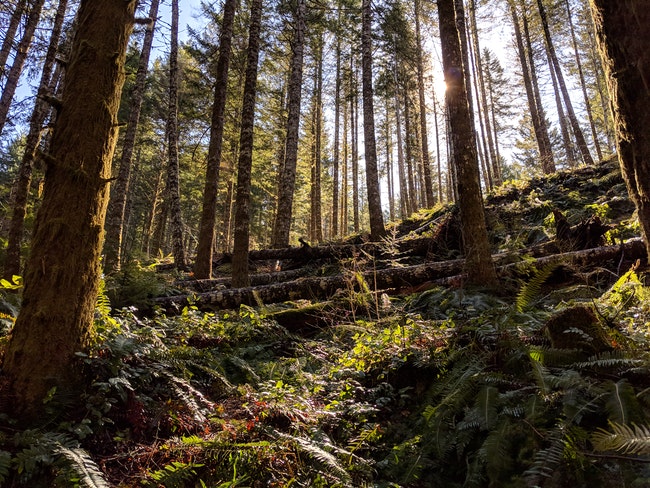A plan to protect critical animal habitat in nearly 640,000 acres of western Oregon state forests is moving towards its final stages.
An environmental impact review of the Western Forests Habitat Conservation Plan was released March 18, and Oregonians have 60 days to submit their thoughts and concerns to the National Oceanic and Atmospheric Administration and the U.S. Fish and Wildlife Service who will be in charge of permitting for the plan.
The 70-year plan is designed to better protect 17 species identified as threatened under the Endangered Species Act. These animals live in the state’s western forests where logging occurs.
The plan also would offer some legal protections to logging companies, giving them more assurance about where they could harvest trees and help them to avoid being sued under the Endangered Species Act.
The plan creates a patchwork of protected habitat areas, mostly in Tillamook and Clatsop counties, that cover about 4% of the Oregon Coast Range.
Currently, the state Forestry Department determines where logging can occur by spot surveying areas to see if any threatened species are present. This costs the agency a lot of time and money and upends some logging operations, according to Michael Wilson, a manager at the department who worked on the habitat conservation plan.
Under the new plan, which took nearly four years to develop, the agency will focus on the protection of critical habitat in areas where the species are known or prone to gather, spawn or forage in, rather than surveying spots of western state forests for nests and animals.
In newly protected habitat areas, there would be wider no-logging zones on land abutting rivers and streams to protect threatened coho and chinook salmon from sediment and heat. It also would prohibit or enact seasonal logging bans against areas known to be nesting and foraging grounds for threatened birds like the northern spotted owl and marbled murrelet.
The 1,850 page environmental review of the habitat conservation plan includes a “recommended option” and five alternative options for the National Oceanic and Atmospheric Administration and the U.S. Fish and Wildlife Service to consider as they issue critical permits to the Oregon Department of Forestry during the next year.
One of those permits would allow the “incidental take” of the threatened animals who are killed or displaced in areas outside the 640,000 acres of protected habitat, in exchange for stricter regulations within the protected habitat areas.
Public comment on the environmental impact statement will be accepted until May 17, and a virtual public meeting will be held by the national fisheries agency from 1:00 p.m. to 3:00 p.m. on Wednesday, April 6.
The state Forestry Department hopes to have its final environmental impact statement done by early 2023 and to have the Western Forests Habitat Conservation Plan ready by next spring for approval by the state Board of Forestry.
Once implemented, the plan and the health of the threatened animals would be monitored by the state Forestry Department and enforced by the National Oceanic and Atmospheric Administration and the U.S. Fish and Wildlife Service.
This story originally appeared in the Oregon Capital Chronicle and is republished here under a CC BY-NC-ND 4.0 license. Read more stories at oregoncapitalchronicle.com.






